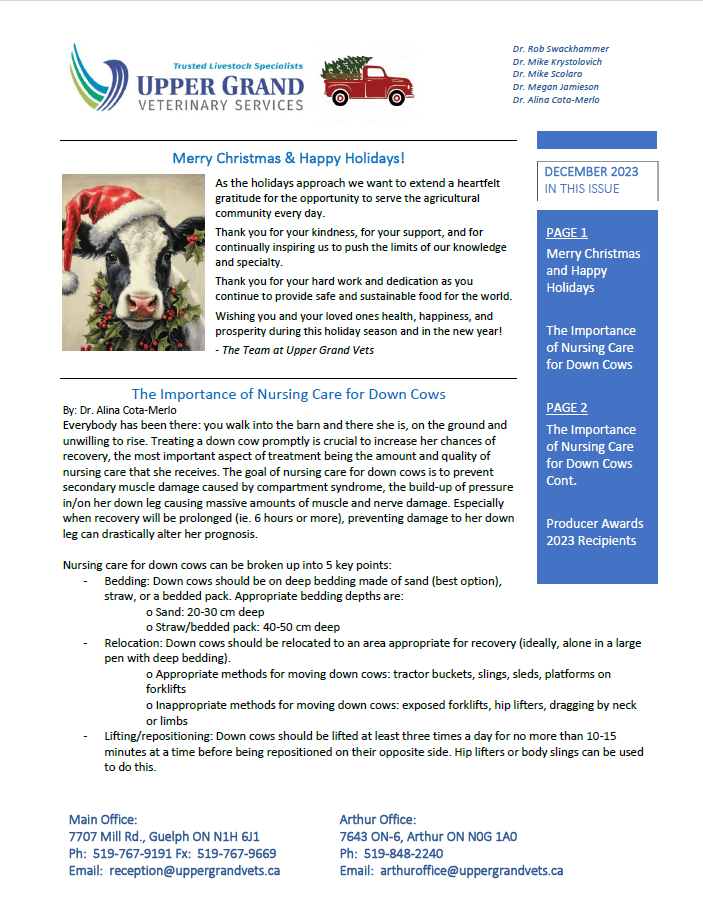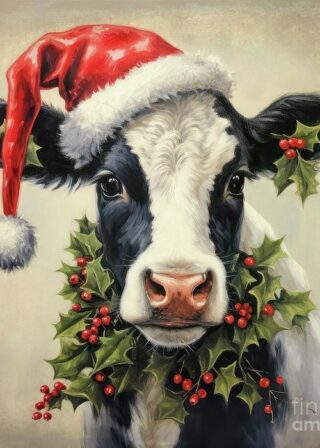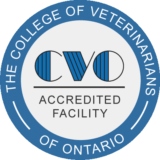UGVS Newsletter – December 2023

Merry Christmas & Happy Holidays!
 As the holidays approach we want to extend a heartfelt gratitude for the opportunity to serve the agricultural community every day.
As the holidays approach we want to extend a heartfelt gratitude for the opportunity to serve the agricultural community every day.
Thank you for your kindness, for your support, and for continually inspiring us to push the limits of our knowledge and specialty.
Thank you for your hard work and dedication as you continue to provide safe and sustainable food for the world.
Wishing you and your loved ones health, happiness, and prosperity during this holiday season and in the new year!
– The Team at Upper Grand Vets
 The Importance of Nursing Care for Down Cows
The Importance of Nursing Care for Down Cows
By: Dr. Alina Cota-Merlo
Everybody has been there: you walk into the barn and there she is, on the ground and unwilling to rise. Treating a down cow promptly is crucial to increase her chances of recovery, the most important aspect of treatment being the amount and quality of nursing care that she receives. The goal of nursing care for down cows is to prevent secondary muscle damage caused by compartment syndrome, the build-up of pressure in/on her down leg causing massive amounts of muscle and nerve damage. Especially when recovery will be prolonged (i.e. 6 hours or more), preventing damage to her down leg can drastically alter her prognosis.
Nursing care for down cows can be broken up into 5 key points:
- Bedding: Down cows should be on deep bedding made of sand (best option), straw, or a bedded pack. Appropriate bedding depths are:
o Sand: 20-30 cm deep
o Straw/bedded pack: 40-50 cm deep
- Relocation: Down cows should be relocated to an area appropriate for recovery (ideally, alone in a large pen with deep bedding).
o Appropriate methods for moving down cows: tractor buckets, slings, sleds, platforms on forklifts
o Inappropriate methods for moving down cows: exposed forklifts, hip lifters, dragging by neck or limbs
- Lifting/repositioning: Down cows should be lifted at least three times a day for no more than 10-15 minutes at a time before being repositioned on their opposite side. Hip lifters or body slings can be used to do this.
- Nutrition: Continue feeding the cow her regular feed, whether it be good-quality, dry hay or TMR. Ensure food and water is always accessible to her and there is no competition from other animals who may be in the same pen.
- Milking: Ensure ongoing udder health by milking down cows twice a day when they are lifted, particularly around peak lactation.No matter the reason for your cow being down, all animals should immediately receive one dose of anti-inflammatory medication to decrease muscle damage of the down leg. If pregnant, Metacam or Anafen would be the product of chose. If she is not pregnant, Dexamethasone, Metacam, or Anafen could be used. It is important to note that euthanasia is always an option for down cows, particularly if a cow is down due to a fracture, dislocation, muscle tear, or if not enough labour force is available to provide adequate nursing care.When making euthanasia decisions outside of the above factors, elements to consider when deciding whether to continue treatment or euthanize are:
- Improvement: is she improving with treatment? Deteriorating? Unchanging?
- Mentation: is she bright? Eating/ruminating? Or is she dull and not eating?
- Bloodwork: The levels of CK and AST in her blood are an excellent indication of the level of muscle damage she has sustained from being down and are a good prognostic indicator for her chances of recovery.
Ask your herd veterinarian about our down cow protocols at UGVS and how they can be adapted for your herd.

 Annual Producer Awards
Annual Producer AwardsAfter not being able to host our Annual Producer Meeting after a couple of years we were very pleased and excited to be able to bring everyone back together in November to discuss different topics, meet with industry partners, and share farm stories and experiences amongst each other. As done in previous years we awarded different farms with producer awards based on reproductive performance and milk quality parameters by using DHI data. We are pleased to share the winners listed below and want to offer them a congratulations for their hard work.
Most Improved Reproduction Records – Steveleigh Holsteins; Steve & Adam Witmer
Most Improved Milk Quality – Perrinridge Farms Ltd.; Vicky Stere
Top Performance Combined Production, Reproduction & Milk Quality –
Andita Holsteins; Andy & Rita Maciukiewicz
Award of Distinction for Dairy – A & E Dairy Ltd.; Eric & Reba Vander Zaag
Most Improved Calf Program – Bridgeview Farms; Pete & Mark Coleman





